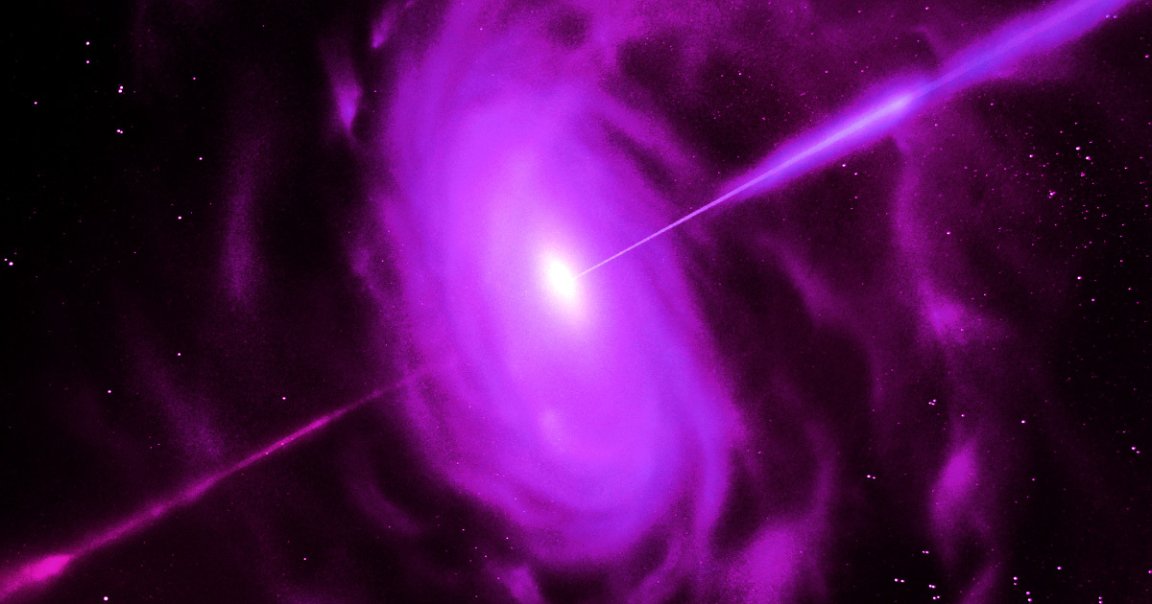
New research suggests that we may be vastly underestimating the number of black holes that existed in the early universe — which could help answer a big question in cosmology.
As detailed in a study published in The Astrophysical Journal Letters, researchers used the Hubble Space Telescope to re-image some of the oldest galaxies we know of ten to 15 years after they were first surveyed, uncovering a wealth of black holes that previously went undetected.
“It turns out that there are several times as many black holes residing in ordinary early galaxies than we originally thought,” study lead author Matthew Hayes, an associate professor of astrophysics at Stockholm University, wrote in an essay for The Conversation.
The newfound candidates are extremely bright cosmic objects called quasars, which are powered by supermassive black holes surrounded by a swirl of heated matter that lends them their luminosity.
Because the black holes’ stream of infalling matter isn’t constant, the radiation that the quasars produce can vary in intensity, like a flickering light bulb. Catch it at the wrong moment, and it may look like nothing’s there.
This could help clear some of the mystery surrounding the origins of supermassive black holes, which form the monstrous, black hearts of countless large galaxies. With masses from hundreds of thousands to billions of times that of the Sun, they should take literal eons to form.
And yet, astronomers have observed supermassive black holes existing when the universe was less than a billion years old. That shouldn’t be enough time for these cosmic objects to grow to such a size. They were either born bigger or grew faster than we thought was possible, Hayes explained.
The researchers argue that there would’ve been too many supermassive black holes around during the early universe to support the theory that they were formed from the “direct collapse” of extremely dense clouds of gas, instead of forming from the collapse of a star as they typically would.
The theory holds that “heavy seeds” would have been around a thousand times more massive than black hole-forming stars, gaining their size through the intervention of invisible dark matter that clumped together. The gravity of these “dark matter haloes” could have condensed enormous amounts of material together until all of it eventually collapsed into an outsized black hole.
For this to be the case, however, black holes should be far rarer than what the researchers observed, because very few dark matter haloes were massive enough to form heavy seeds, according to Hayes.
That leaves astronomers with a more “exotic” option: hypothetical “dark stars,” which would be much more massive than what’s possible for conventional stars.
Such stellar objects would have also been influenced by dark matter. In this case, the energy released by the annihilation of dark matter particles — similar to how matter and anti-matter particles annihilate each other when they collide — could have provided the internal heat and pressure necessary in lieu of nuclear fusion, allowing otherwise star-forming clouds to grow to even greater masses, perhaps big enough to instantly collapse into a black hole.
“We now believe that processes similar to this should have taken place to form the large numbers of black holes we observe in the infant universe,” Hayes wrote.
Of course, this is a pretty big leap to make. However, the James Webb Space Telescope has spotted potential dark star candidates, seemingly supporting the hypothesis. In five years, perhaps, Hayes believes we’ll have an even more detailed picture of early black hole formation.
More on space: James Webb Telescope Captures Spectacular Images of “Inside-Out” Galaxy Being Born